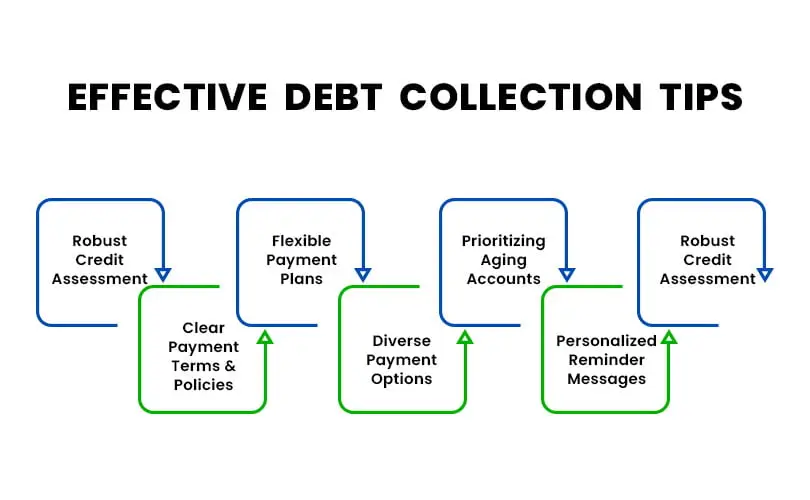
Struggling to keep up with bills and debt can feel like trying to swim against a strong current. For small businesses, it’s not uncommon to face hurdles in managing cash flow, especially when it comes to paying vendors and handling debt. These challenges can pile up quickly, making it tough to stay afloat. But you’re not alone. Many small businesses face similar struggles, and there are ways to navigate through them. In this guide, we’ll explore some strategies and tips to help small businesses tackle debt collection issues and manage cash flow better, so you can keep your business moving forward. Let’s dive in! Taurus Collection India is a well-established financial advisor and debt collection agency with a proven track record in debt collections.
A collection strategy is a streamlined action plan to stabilize the cashflows from your debtors. This requires properly identifying your target customer base, collecting data and history about their past payments. This helps you to identify the gaps in your collecting process and correcting any lacunae. After putting in place a financial budget and an action plan, you can formulate a proper collection strategy.
Key Challenges Faced by Small Businesses Collecting Debt in India
Small businesses struggling with debt collection and cash flow issues often face several interconnected challenges:
Late Payments from Customers: One of the primary reasons for cash flow problems is late payments or non-payment by customers. This delay in receiving payments disrupts the business’s ability to pay its own bills on time.
Ineffective Debt Collection Practices: Small businesses may lack efficient debt collection processes or resources to pursue outstanding payments from customers. This could be due to limited manpower, expertise, or reluctance to pursue aggressive collection actions that could strain customer relationships.
Unforeseen Expenses: Unexpected expenses such as equipment breakdowns, emergency repairs, or legal fees can strain a small business’s finances, making it difficult to cover ongoing operational costs or pay vendor bills.
Overextension of Credit: Some small businesses may extend credit to customers without conducting thorough credit checks or establishing clear payment terms. This can lead to a higher risk of late payments or defaults, exacerbating cash flow problems.
Seasonal Fluctuations: Businesses in industries with seasonal demand may experience periods of low revenue, making it challenging to meet financial obligations during off-peak seasons.
Limited Access to Financing: Small businesses may struggle to access affordable financing options to bridge temporary cash flow gaps or fund growth initiatives. Banks and traditional lenders may be hesitant to extend credit to businesses with uncertain financial prospects or insufficient collateral.
High Fixed Costs: Fixed costs such as rent, utilities, and salaries can create financial pressure on small businesses, especially during periods of low revenue or economic downturns.
Lack of Financial Management Skills: Some small business owners may lack the financial literacy or expertise needed to effectively manage cash flow, budgeting, and debt repayment. This can result in poor decision-making and inadequate planning for financial challenges.
Addressing these issues often requires a combination of proactive debt management strategies, efficient cash flow forecasting, tighter credit control measures, and seeking support from financial advisors or debt relief programs.

Source: Highradius.com
Struggling with invoice collection and cash flow issues can be challenging for small businesses. Here are some strategies they can employ to manage their cash flow problems:
Invoice Management:
Negotiate Payment Terms:
Cut Costs:
Increase Revenue:
Improve Cash Flow Forecasting:
Explore Financing Options:
Build a Cash Reserve:
Improve Inventory Management:
Seek Professional Advice:
Consider consulting with a financial advisor like Taurus Collection India who can provide personalized guidance and help you develop a tailored strategy for managing your cash flow issues.
By implementing these strategies, as a small business, you can better manage your cash flow problems and improve their financial stability.
Assessing the creditworthiness of customers is crucial for small businesses in India to minimize the risk of non-payment and maintain healthy cash flow. Here’s a guide on how they can do it:
Request Financial Statements: Ask customers for their financial statements, including balance sheets, income statements, and cash flow statements. Analyzing these can provide insights into their financial health and ability to repay debts.
Credit Checks: Utilize credit reporting agencies such as CIBIL (Credit Information Bureau India Limited) to check the credit history of potential customers. This can reveal their payment behavior with past creditors and help predict their future behavior.
Trade References: Request references from other businesses that have extended credit to the customer in the past. This can give you an idea of their reliability in meeting payment obligations.
Bank References: Obtain references from the customer’s bank to assess their banking relationship and financial stability.
Credit Application Form: Have customers fill out a credit application form that includes information such as business details, financial information, trade references, and bank references.
Payment Terms: Set clear payment terms and conditions upfront. Consider shorter payment terms for customers with questionable creditworthiness or those with whom you have limited history.
Collateral or Guarantees: For high-risk customers, consider requesting collateral or guarantees to secure the transaction.
Credit Scoring Models: Develop or use credit scoring models to evaluate the credit risk of customers based on factors such as payment history, outstanding debts, and financial stability.
Monitor Payment Behavior: Regularly monitor the payment behavior of customers. Late payments or defaults can be early warning signs of financial distress.
Invoice Financing: Consider using invoice financing services where third-party financiers advance funds against outstanding invoices. These services often assess the creditworthiness of customers before providing financing.
Insurance: Explore credit insurance options that protect against non-payment by customers. This can provide an additional layer of security for small businesses extending credit.
Legal Recourse: Have a clear understanding of legal recourse options in case of non-payment, including debt recovery procedures and legal actions available under Indian law.
By employing these strategies, small businesses in India can effectively assess the creditworthiness of their customers and mitigate the risk of non-payment.
An effective debt collection strategy balances persistence with professionalism and compliance, employing a combination of clear policies, effective communication, flexible payment options, and continuous monitoring.
By prioritizing debts, utilizing technology, and maintaining a well-trained team, you can improve recovery rates while preserving customer relationships. As collection teams struggle with the sheer volume of tasks involved in collections, automated tools like AI and Machine Learning and greatly help to reduce burden. Whether it is customer reminders, reducing missed deadlines, and real-time payment tracking to reduce missed deadlines, or accurate reporting for data-driven decision making, a financial advisory and debt collection agency like Taurus Collection India helps to greatly streamline workflows and combines traditional know-how with new age debt collection strategies.






Taurus Collection is a B2B & B2C collection agency that goes beyond the ordinary. With a commitment to excellence, we offer a ‘No Collection, No Fee’ service that is backed by our in-house advocates with an exceptionally high success rate.
Copyright © 2025 All Rights Reserved | Taurus Collection Pvt Ltd. CIN U74999MH2021PTC355667